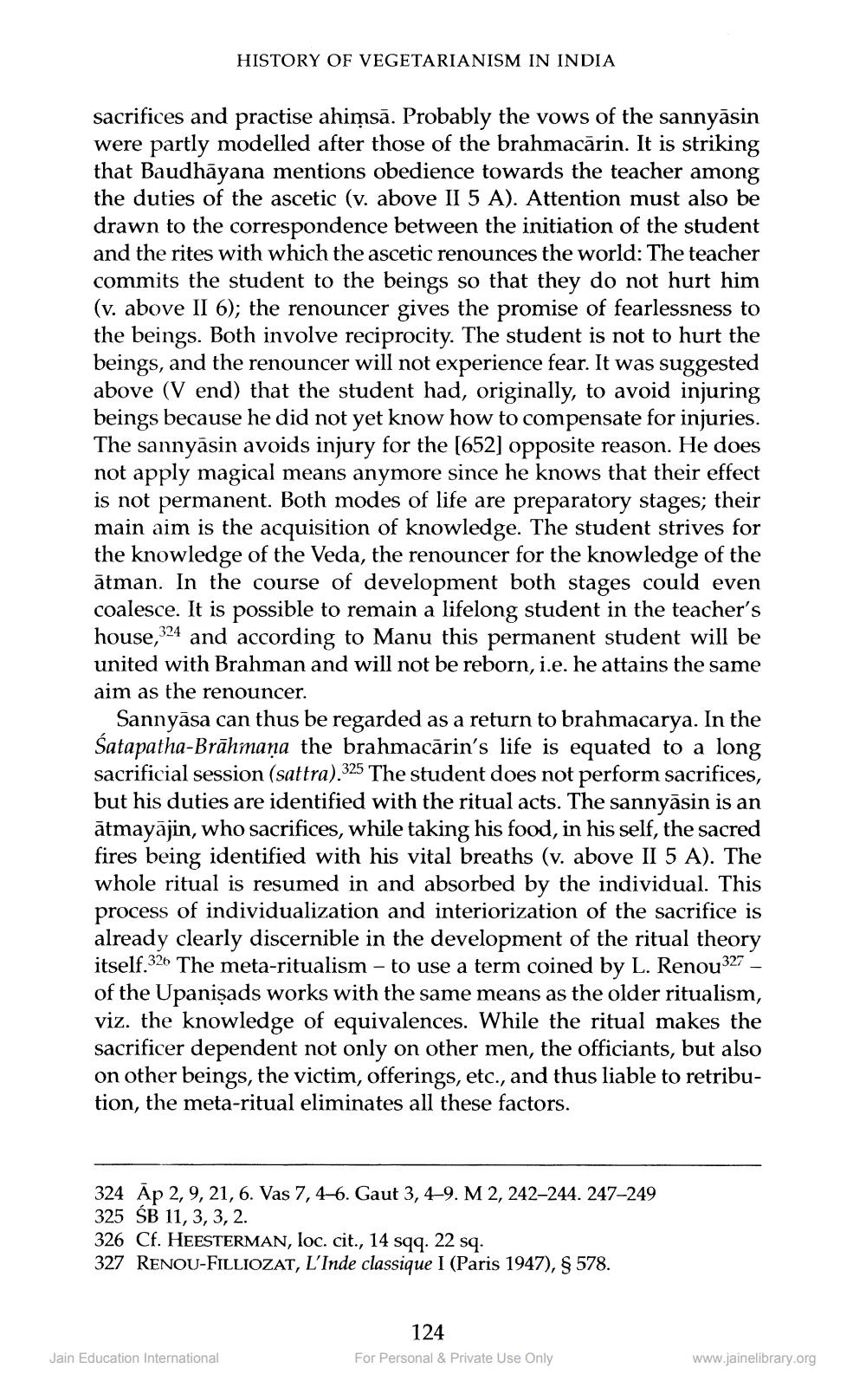________________
HISTORY OF VEGETARIANISM IN INDIA
sacrifices and practise ahimsā. Probably the vows of the sannyasin were partly modelled after those of the brahmacārin. It is striking that Baudhāyana mentions obedience towards the teacher among the duties of the ascetic (v. above II 5 A). Attention must also be drawn to the correspondence between the initiation of the student and the rites with which the ascetic renounces the world: The teacher commits the student to the beings so that they do not hurt him (v. above II 6); the renouncer gives the promise of fearlessness to the beings. Both involve reciprocity. The student is not to hurt the beings, and the renouncer will not experience fear. It was suggested above (V end) that the student had, originally, to avoid injuring beings because he did not yet know how to compensate for injuries. The sannyāsin avoids injury for the [652] opposite reason. He does not apply magical means anymore since he knows that their effect is not permanent. Both modes of life are preparatory stages; their main aim is the acquisition of knowledge. The student strives for the knowledge of the Veda, the renouncer for the knowledge of the ātman. In the course of development both stages could even coalesce. It is possible to remain a lifelong student in the teacher's house,324 and according to Manu this permanent student will be united with Brahman and will not be reborn, i.e. he attains the same aim as the renouncer.
Sannyāsa can thus be regarded as a return to brahmacarya. In the Satapatha-Brāhmaṇa the brahmacārin's life is equated to a long sacrificial session (sattra).325 The student does not perform sacrifices, but his duties are identified with the ritual acts. The sannyāsin is an ātmayājin, who sacrifices, while taking his food, in his self, the sacred fires being identified with his vital breaths (v. above II 5 A). The whole ritual is resumed in and absorbed by the individual. This process of individualization and interiorization of the sacrifice is already clearly discernible in the development of the ritual theory itself.326 The meta-ritualism - to use a term coined by L. Renou327 - of the Upanișads works with the same means as the older ritualism, viz. the knowledge of equivalences. While the ritual makes the sacrificer dependent not only on other men, the officiants, but also on other beings, the victim, offerings, etc., and thus liable to retribution, the meta-ritual eliminates all these factors.
324 Āp 2, 9, 21, 6. Vas 7,4-6. Gaut 3,4-9. M 2,242–244. 247,249 325 SB 11, 3, 3, 2. 326 Cf. HEESTERMAN, loc. cit., 14 sqq. 22 sq. 327 RENOU-FILLIOZAT, L'Inde classique I (Paris 1947), S 578.
124 For Personal & Private Use Only
Jain Education International
www.jainelibrary.org




